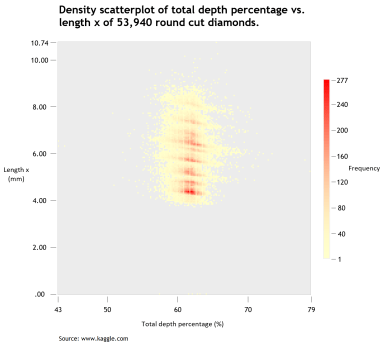
Publication number: ELQ-17187-1
View all versions & Certificate

Density Scatterplot in Excel
Excel template to build a Density Scatterplot to solve the problem of over-plotting in statistical graphs.
Further information
To enable business analysts, consultants, scientists, statisticians, data visualizers and journalists to produce Density Scatterplots in Excel to solve the problem of over-plotting in statistical graphs.
Exploratory data analysis (EDA), reporting and communication in business, science, statistics, data visualization or data journalism.
Template relies heavily on Excel's Dynamic Arrays capabilities, only available to Office 365 subscribers.



